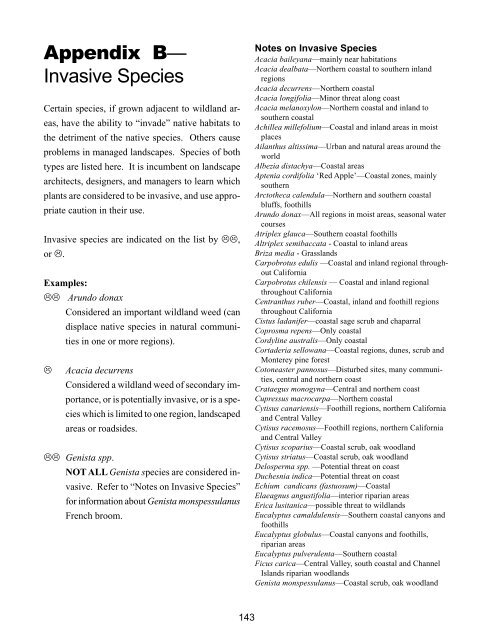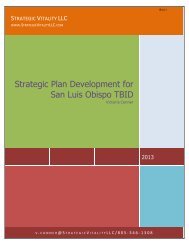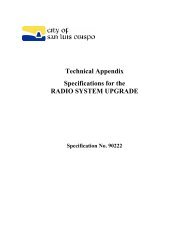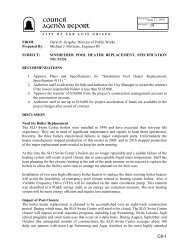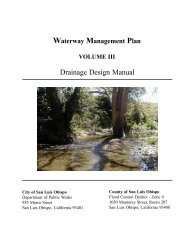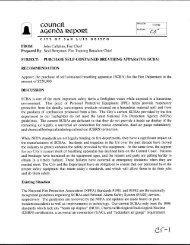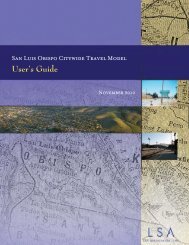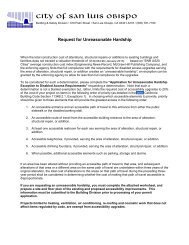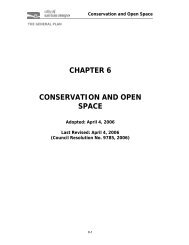Guide to Estimating Irrigation Water Needs of Landscape Plantings
Guide to Estimating Irrigation Water Needs of Landscape Plantings
Guide to Estimating Irrigation Water Needs of Landscape Plantings
You also want an ePaper? Increase the reach of your titles
YUMPU automatically turns print PDFs into web optimized ePapers that Google loves.
Appendix B—<br />
Invasive Species<br />
Certain species, if grown adjacent <strong>to</strong> wildland areas,<br />
have the ability <strong>to</strong> “invade” native habitats <strong>to</strong><br />
the detriment <strong>of</strong> the native species. Others cause<br />
problems in managed landscapes. Species <strong>of</strong> both<br />
types are listed here. It is incumbent on landscape<br />
architects, designers, and managers <strong>to</strong> learn which<br />
plants are considered <strong>to</strong> be invasive, and use appropriate<br />
caution in their use.<br />
Invasive species are indicated on the list by ☹☹,<br />
or ☹.<br />
Examples:<br />
☹☹ Arundo donax<br />
Considered an important wildland weed (can<br />
displace native species in natural communities<br />
in one or more regions).<br />
☹<br />
Acacia decurrens<br />
Considered a wildland weed <strong>of</strong> secondary importance,<br />
or is potentially invasive, or is a species<br />
which is limited <strong>to</strong> one region, landscaped<br />
areas or roadsides.<br />
☹☹ Genista spp.<br />
NOT ALL Genista species are considered invasive.<br />
Refer <strong>to</strong> “Notes on Invasive Species”<br />
for information about Genista monspessulanus<br />
French broom.<br />
Notes on Invasive Species<br />
Acacia baileyana—mainly near habitations<br />
Acacia dealbata—Northern coastal <strong>to</strong> southern inland<br />
regions<br />
Acacia decurrens—Northern coastal<br />
Acacia longifolia—Minor threat along coast<br />
Acacia melanoxylon—Northern coastal and inland <strong>to</strong><br />
southern coastal<br />
Achillea millefolium—Coastal and inland areas in moist<br />
places<br />
Ailanthus altissima—Urban and natural areas around the<br />
world<br />
Albezia distachya—Coastal areas<br />
Aptenia cordifolia ‘Red Apple’—Coastal zones, mainly<br />
southern<br />
Arc<strong>to</strong>theca calendula—Northern and southern coastal<br />
bluffs, foothills<br />
Arundo donax—All regions in moist areas, seasonal water<br />
courses<br />
Atriplex glauca—Southern coastal foothills<br />
Altriplex semibaccata - Coastal <strong>to</strong> inland areas<br />
Briza media - Grasslands<br />
Carpobrotus edulis —Coastal and inland regional throughout<br />
California<br />
Carpobrotus chilensis — Coastal and inland regional<br />
throughout California<br />
Centranthus ruber—Coastal, inland and foothill regions<br />
throughout California<br />
Cistus ladanifer—coastal sage scrub and chaparral<br />
Coprosma repens—Only coastal<br />
Cordyline australis—Only coastal<br />
Cortaderia sellowana—Coastal regions, dunes, scrub and<br />
Monterey pine forest<br />
Co<strong>to</strong>neaster pannosus—Disturbed sites, many communities,<br />
central and northern coast<br />
Crataegus monogyna—Central and northern coast<br />
Cupressus macrocarpa—Northern coastal<br />
Cytisus canariensis—Foothill regions, northern California<br />
and Central Valley<br />
Cytisus racemosus—Foothill regions, northern California<br />
and Central Valley<br />
Cytisus scoparius—Coastal scrub, oak woodland<br />
Cytisus striatus—Coastal scrub, oak woodland<br />
Delosperma spp. —Potential threat on coast<br />
Duchesnia indica—Potential threat on coast<br />
Echium candicans (fastuosum)—Coastal<br />
Elaeagnus angustifolia—interior riparian areas<br />
Erica lusitanica—possible threat <strong>to</strong> wildlands<br />
Eucalyptus camaldulensis—Southern coastal canyons and<br />
foothills<br />
Eucalyptus globulus—Coastal canyons and foothills,<br />
riparian areas<br />
Eucalyptus pulverulenta—Southern coastal<br />
Ficus carica—Central Valley, south coastal and Channel<br />
Islands riparian woodlands<br />
Genista monspessulanus—Coastal scrub, oak woodland<br />
143


